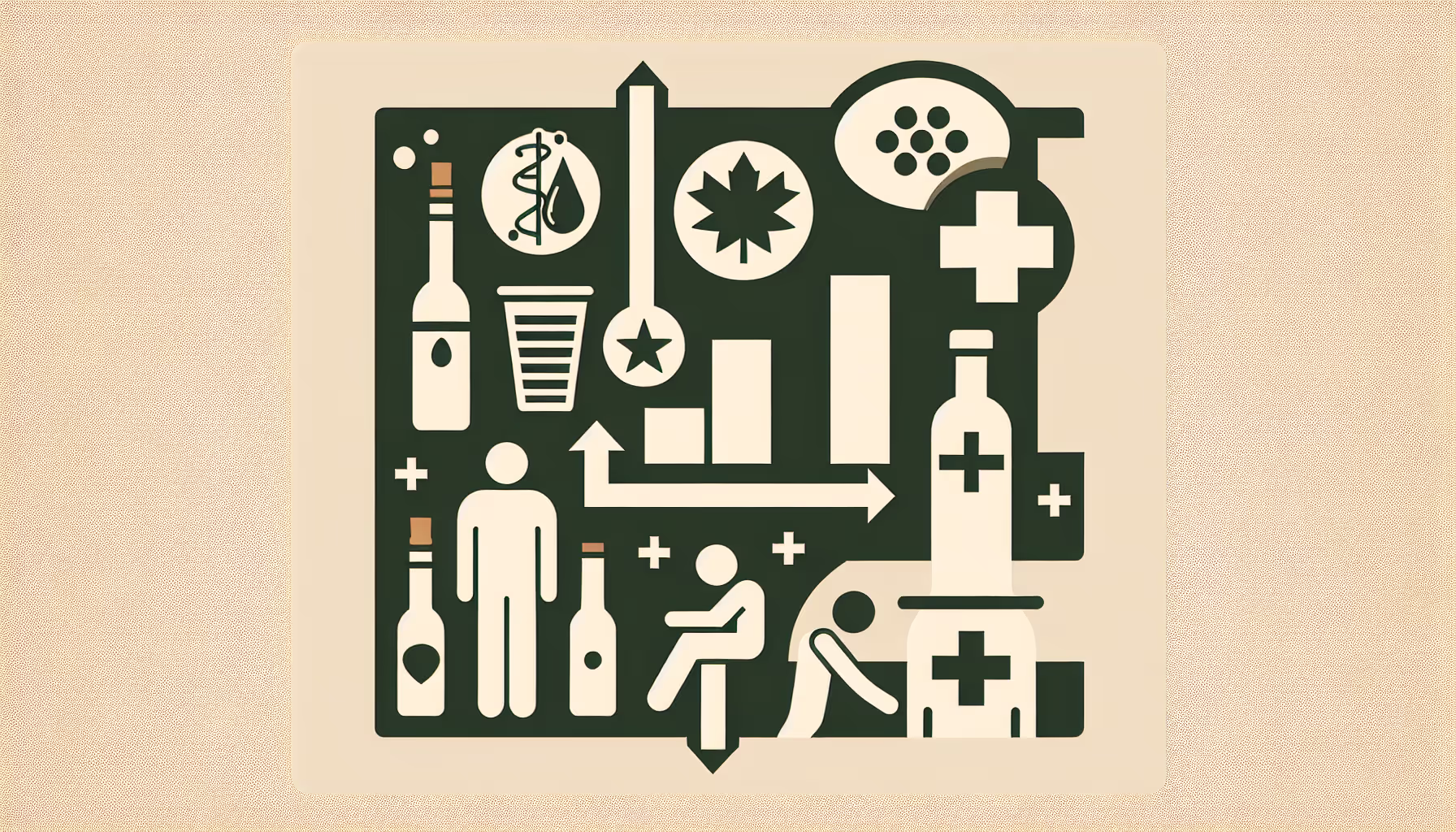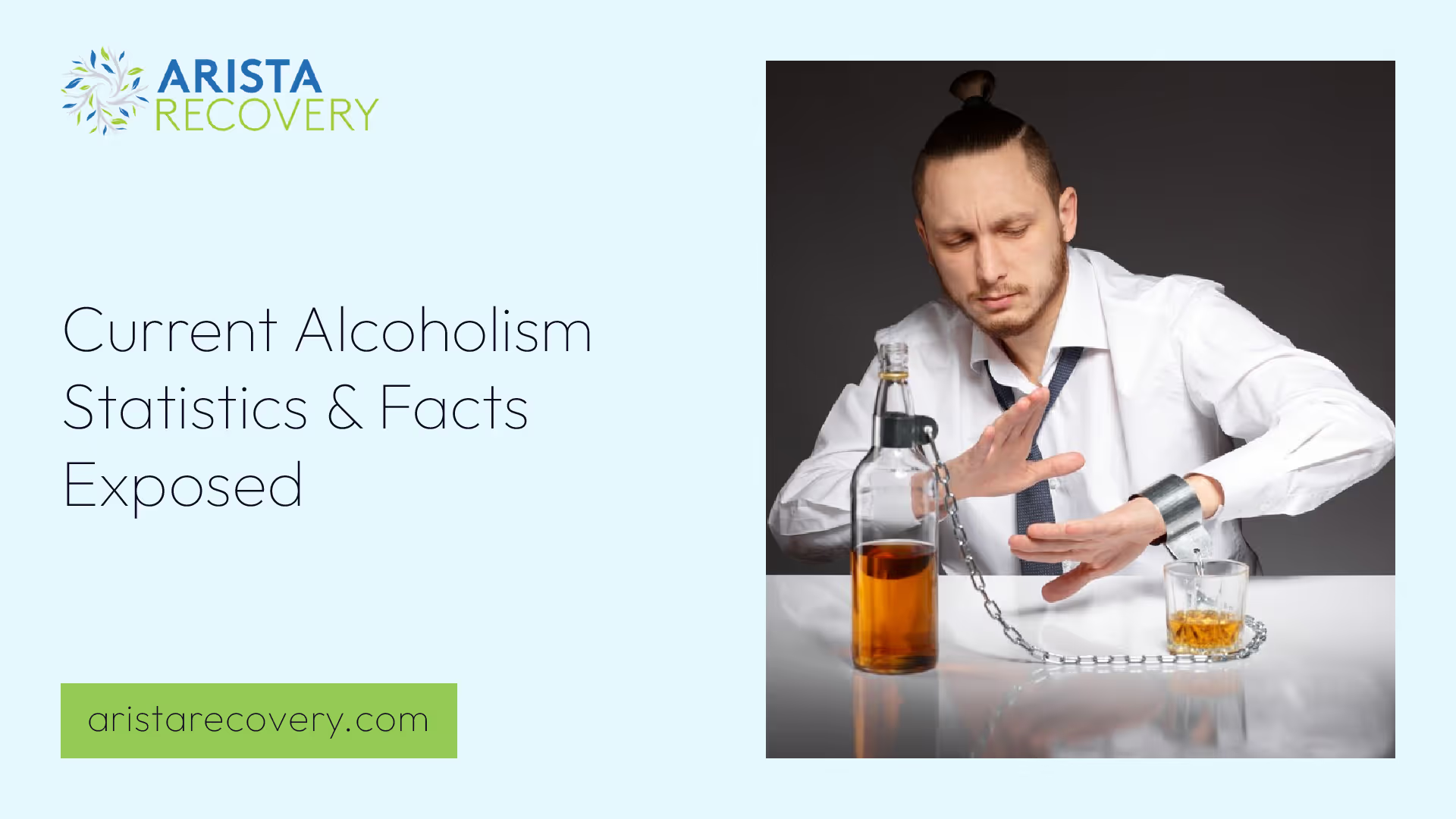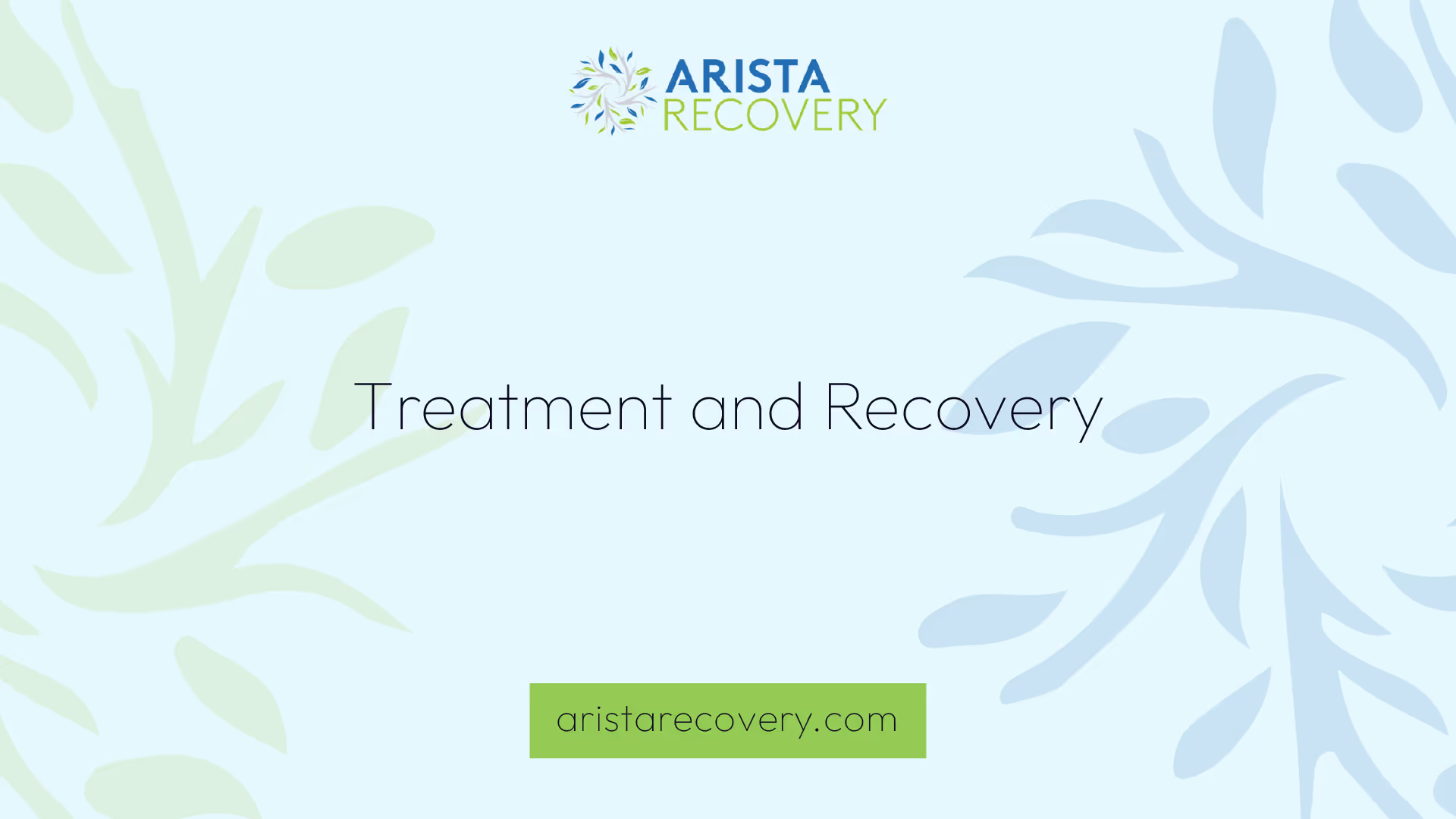Current Alcoholism Statistics & Facts Exposed


Understanding Alcohol Use Disorder
Alcohol Use Disorder (AUD) is a significant public health concern, affecting millions worldwide. It is defined by the World Health Organization's International Classification of Diseases, and its prevalence varies significantly across different demographics and regions.
Prevalence of AUD
Globally, it's estimated that around 1 percent of the population has an alcohol use disorder. The prevalence of this disorder is highest in individuals aged between 15 and 49 years old. However, the rates of AUD can vary widely at the country level, ranging from approximately 0.5 to 5 percent of the population.
In 2020, the Substance Abuse and Mental Health Services Administration (SAMHSA) Helpline experienced a 27 percent increase in calls, receiving 833,598 calls compared to the 656,953 calls in 2019 [2]. This surge in calls may reflect growing awareness of AUD and the need for support and treatment.
Gender Disparities in AUD
The prevalence of AUD varies significantly by gender. Approximately three-quarters of people with AUD are male, demonstrating the gender disparity inherent in this disorder [1].
In the United States, more males than females consume alcohol each year, with 68% of males and 64% of females being drinkers. Males also tend to drink more frequently and heavily, consuming nearly three times as much pure alcohol per year compared to females (19.0 liters for males, 6.7 liters for females) [3].
However, gender disparities in AUD are not uniform across all regions. For instance, in Singapore, while lifetime prevalence and 12-month prevalence for AUD were higher in males than females, females had a higher prevalence of obsessive-compulsive disorder (OCD) comorbidity. Moreover, women had an earlier onset and age of recovery of AUD than men, although both genders reported low help-seeking for their AUD [4].
Understanding the prevalence and gender disparities in AUD is crucial as it helps in formulating targeted interventions and policies to address this issue. For more facts and statistics on similar topics, you can explore our articles on video game addiction statistics & facts, statistics about drug abuse & facts, and eating disorder statistics & facts.
Global Impact of Alcohol Misuse
Alcohol misuse continues to be a significant global health concern, affecting millions of people across the world. The impact of this issue extends beyond individual health, contributing to substantial societal and economic burdens.
Deaths and Disability
In 2016, the toll of alcohol misuse was devastating, accounting for 3 million deaths globally, which represents 5.3% of all deaths [5]. This misuse of alcohol was not only one of the leading causes of premature death, but also a significant factor in disability. It was the seventh leading risk factor for premature death and disability worldwide in the same year.
Alarmingly, among people aged 15 to 49, alcohol misuse was the leading risk factor for premature death and disability in 2016. Furthermore, alcohol misuse was responsible for 132.6 million disability-adjusted life years (DALYs) lost due to premature death and disability.
Economic Burden
Beyond the toll on human life and well-being, alcohol misuse also carries a hefty economic burden. It leads to increased healthcare costs, lost productivity, and other societal damages. Moreover, alcohol misuse contributes to over 200 diseases and injury-related health conditions, including alcohol use disorders, liver cirrhosis, cancers, and injuries.
It's essential to continue raising awareness about the global impact of alcohol misuse, and the importance of seeking help for alcohol-related issues. For insights into other topics related to addiction and its societal impact, you can explore our articles on video game addiction statistics & facts, statistics about drug abuse & facts, and eating disorder statistics & facts.
The data underscores the need for continued research, effective prevention strategies, and comprehensive treatment services to mitigate the effects of alcohol misuse on a global scale.
Alcohol Statistics in the USA
Unveiling the current alcoholism statistics and facts, it's clear that alcohol misuse has severe social and economic impacts, particularly in the United States. This section will shed light on the cost of excessive drinking and mortality rates associated with alcohol abuse in the USA.
Cost of Excessive Drinking
In the United States, the economic burden of excessive alcohol consumption is staggering. According to the National Institute on Alcohol Abuse and Alcoholism, the cost to the economy was $249 billion in 2010, with binge drinking accounting for 77% of these costs.
The economic costs of excessive alcohol consumption have also been on the rise, increasing by 1.8% from 2006 to 2010. This highlights the growing issue of alcohol misuse and its escalating impact on the economy.
A significant portion of these costs can be attributed to productivity losses, which amounted to $179 billion in 2010. It's important to note that the cost of alcohol misuse in the United States is higher than the costs associated with other chronic diseases such as cancer and obesity.
Mortality Rates
Alcohol misuse is not just an economic concern but a major health issue as well. It is responsible for 95,000 deaths annually in the United States, making it the third leading preventable cause of death in the country.
This alarming mortality rate underscores the immediate need for more effective strategies to combat alcohol misuse. A comprehensive approach that includes prevention, treatment, and recovery support services is critical to reducing the devastating impact of alcohol misuse on individuals, families, and communities.
For more information on other addiction-related statistics, check out our articles on video game addiction statistics & facts, statistics about drug abuse & facts, and eating disorder statistics & facts.

Treatment and Recovery
In the context of the current alcoholism statistics & facts, it's essential to understand the available treatment options for Alcohol Use Disorder (AUD). These options include both pharmacological interventions and behavioral therapies.
Available Medications
In the United States, the NIAAA has approved three medications to help people stop or reduce their drinking and prevent a return to drinking: Naltrexone, Acamprosate, and Disulfiram.
These medications can be effective in treating AUD when combined with counselling and support. However, they are not a cure for AUD and are most effective when used as part of a comprehensive recovery plan.
Behavioral Therapies
Behavioral therapies form a critical part of the recovery process from AUD. According to NIAAA, research shows that most people who have alcohol problems are able to reduce their drinking or quit entirely through these therapies.
Behavioral therapies for AUD include Cognitive Behavioral Therapy (CBT), Motivational Enhancement Therapy (MET), and Marital and Family Counseling. These therapies aim to help individuals change their drinking behavior through counseling. They are often more effective when combined with medication and other forms of treatment.
Despite the seriousness of AUD, recovery is attainable. As NIAAA notes, most people with AUD can benefit from some form of treatment, and many others substantially reduce their drinking and report fewer alcohol-related problems.
For more statistics & facts on other forms of addiction, refer to our articles on video game addiction, drug abuse, and eating disorders. Also, check out our resources on addiction relapse rates in the united states for more information on recovery success rates.
Alcohol Consumption Trends
In understanding the current alcoholism statistics & facts, it's crucial to observe the trends in alcohol consumption. This includes analyzing changes over time and the impact of significant global events, such as the COVID-19 pandemic.
Changes Over Time
Between 2002 and 2018, past-month alcohol use by adolescents ages 12 to 17 decreased from 18% to 9%, and binge drinking declined from 11% to 5%. Interestingly, the declines in drinking were much larger for young males than for young females, leading to a significant narrowing of long-established gender differences in alcohol use among adolescents.
In a broader perspective, the rate of premature deaths caused by alcohol globally has declined from approximately 40 deaths per 100,000 people in the early 1990s to 30 deaths per 100,000 in 2019.
Impact of COVID-19
The emergence of the COVID-19 pandemic had a significant impact on alcohol consumption trends. Stay-at-home orders led to increased rates of excess alcohol intake, with 23% of Americans reporting drinking more alcohol to cope with stress during COVID-19. The frequency of alcohol consumption in the U.S. increased by 14% between April 2020 and June 2020, and alcohol problems increased during May 2020 and March 2021.
This data highlights the significant role external events and societal changes can play in influencing alcohol consumption trends. For comparisons, you might want to check out our articles on video game addiction statistics & facts, statistics about drug abuse & facts, and eating disorder statistics & facts.
Health Risks and Consequences
Excessive alcohol consumption has significant health implications and often results in serious medical conditions and emergency department visits. This section delves into the severe health impacts associated with alcohol misuse.
Medical Conditions
Long-term excessive alcohol use is associated with a myriad of health issues. According to the NCBI, these include psychiatric disorders, liver and heart diseases, stomach ulcers, stroke, and certain types of cancer. Even light alcohol consumption can increase the risk of certain cancers.
One year after the diagnosis of a condition attributable to alcohol, the additional medical spending is estimated to be $14,918 per person in commercially insured populations and $4,823 per person in Medicaid-insured populations. Most of these additional costs are driven by heart disease, stroke, conditions of the liver, gallbladder, pancreas, certain cancers, and acute conditions attributable to alcohol.
The table below gives an overview of the additional medical spending associated with alcohol-attributable conditions:
Emergency Department Visits
Visits to the emergency department due to excessive alcohol use have also seen a significant increase. Between 2006 and 2014, these visits increased by 47%, with associated costs rising by a staggering 272%. In 2010, $28 billion of excessive alcohol use costs were attributed to medical spending.
It's worth noting that the cost of alcohol misuse in the United States is higher than the costs associated with other chronic diseases such as cancer and obesity [7].
The alarming current alcoholism statistics and facts highlight the critical need for prevention and treatment strategies. It's important for individuals to be informed about the health risks associated with excessive alcohol consumption and to seek help if they're struggling with alcohol use disorder. For more information on addiction-related statistics and facts, you can visit our articles on video game addiction, drug abuse, and eating disorders.
Demographic Patterns
Analyzing the current alcoholism statistics & facts, it's evident that demographic patterns play a significant role in alcohol consumption and alcohol-related problems. Specific age groups and genders exhibit distinct patterns in alcohol use.
Age Groups
Alcohol consumption varies among different age groups. Remarkably, between 2002 and 2018, past-month alcohol use by adolescents ages 12 to 17 decreased from 18% to 9%, and binge drinking declined from 11% to 5%. The declines in drinking were much larger for young males than for young females, leading to significant narrowing of long-established gender differences in alcohol use among adolescents. (NCBI)
Gender Disparities
In the United States, more males than females drink each year, with 68% of males and 64% of females being drinkers. Males tend to drink more often and heavily, consuming nearly three times as much pure alcohol per year compared to females (19.0 liters for males, 6.7 liters for females) [3].
However, it's important to note that rates of alcohol-related hospitalizations and emergency department visits have increased more for women. Between 2006 and 2014, the number of emergency department visits involving alcohol increased by 58% for men and 70% for women.
Additionally, between 1999 and 2017, nearly 1 million people died in the United States from alcohol-related injuries, overdoses, and diseases. Males accounted for 76% of alcohol-related deaths over the years. However, a steeper increase was observed for females (136% increase in numbers, 85% in age-adjusted rates) than for males (93% increase in numbers, 39% in rates) [3].
Furthermore, driving under the influence of alcohol (DUI) declined over the past few decades, but the rates of decline were greater for males than females. Between 1990 and 2007, rates of arrests for DUI declined by 32% for males but by only 5% for females.
It's crucial to consider these demographic patterns when formulating strategies to combat alcohol misuse and when seeking treatments such as medications and behavioral therapies. For more statistics and facts on addiction, check our articles on video game addiction and drug abuse.

Addressing High-Intensity Drinking
High-intensity drinking, a level of alcohol consumption that is significantly higher than the gender-specific binge drinking thresholds, has serious impacts on both individual health and society at large. We will discuss the risk factors and consequences associated with this behavior.
Risk Factors
High-intensity drinking is often associated with a variety of risk factors. These can include but are not limited to, socio-economic status, mental health conditions, peer pressure, and the availability of alcohol. Further, the emergence of the COVID-19 pandemic and stay-at-home orders have also contributed to an increase in excessive alcohol intake. As reported by NCBI, 23% of Americans reported drinking more alcohol to cope with stress during the pandemic.
These risk factors can influence an individual's propensity to engage in high-intensity drinking, which in turn can lead to a higher likelihood of alcohol-related emergencies. As per NIAAA, high-intensity drinking was associated with significantly higher likelihoods of alcohol-related emergency department visits.
Consequences
The consequences of high-intensity drinking are far-reaching, impacting both personal health and society. According to NCBI, between 2006 and 2014, visits to the emergency department due to excessive alcohol use increased by 47%, with associated costs rising by 272%.
In terms of health implications, long-term excessive alcohol use is associated with psychiatric disorders, liver and heart diseases, stomach ulcers, stroke, and cancer. Even light alcohol consumption increases the risk of certain cancers.
From an economic perspective, the impact is also significant. The National Institute on Alcohol Abuse and Alcoholism reports that excessive alcohol consumption led to productivity losses of $179 billion in 2010 in the United States.
Addressing high-intensity drinking is crucial to mitigating these impacts. It is important to promote awareness about the dangers of excessive alcohol consumption and provide resources for individuals seeking help. For more information about addiction and recovery, visit our pages on video game addiction statistics & facts, statistics about drug abuse & facts, eating disorder statistics & facts, and addiction relapse rates in the United States.
References
[1]: https://ourworldindata.org/alcohol-consumption
[2]: https://www.samhsa.gov/find-help/national-helpline
[3]: https://www.ncbi.nlm.nih.gov/pmc/articles/PMC7590834/
[4]: https://link.springer.com/article/10.1007/s11469-022-00921-y
[5]: https://www.niaaa.nih.gov/alcohols-effects-health/alcohol-topics/alcohol-facts-and-statistics/global-burden
[6]: https://www.ncbi.nlm.nih.gov/pmc/articles/PMC10546560/
[7]: https://www.niaaa.nih.gov/alcohols-effects-health/alcohol-topics/alcohol-facts-and-statistics/economic-burden-alcohol-misuse-united-states
You’re not alone in this.
When mental health challenges and addiction intersect, it can feel isolating. At Arista, we offer compassionate, evidence-based, and trauma-informed care to help you heal, grow, and move forward.
You’re not alone in this.
When mental health challenges and addiction intersect, it can feel isolating. At Arista, we offer compassionate, evidence-based, and trauma-informed care to help you heal, grow, and move forward.
Support that moves with you.
You’ve taken a brave first step. At Arista Recovery, we’re here to help you continue with best-in-class care designed for long-term healing and support.
.webp)






